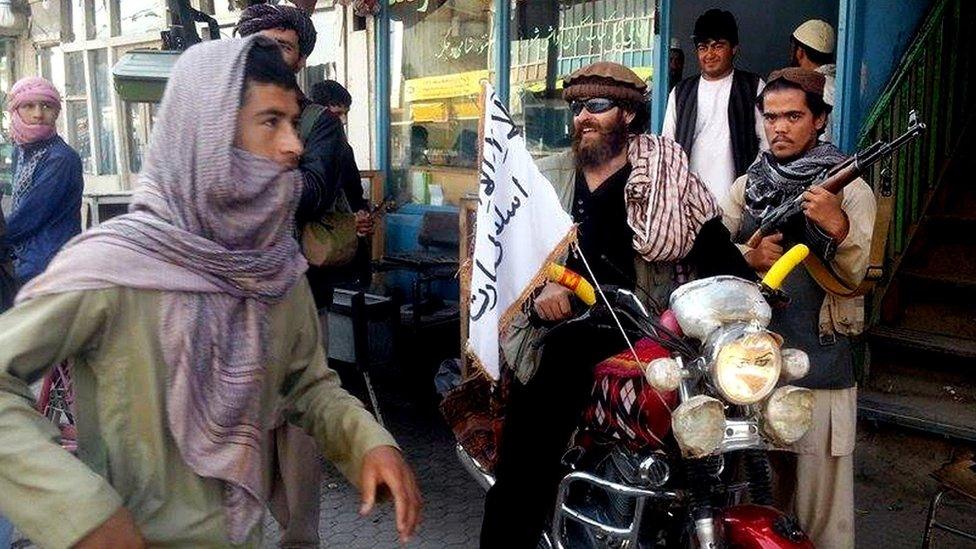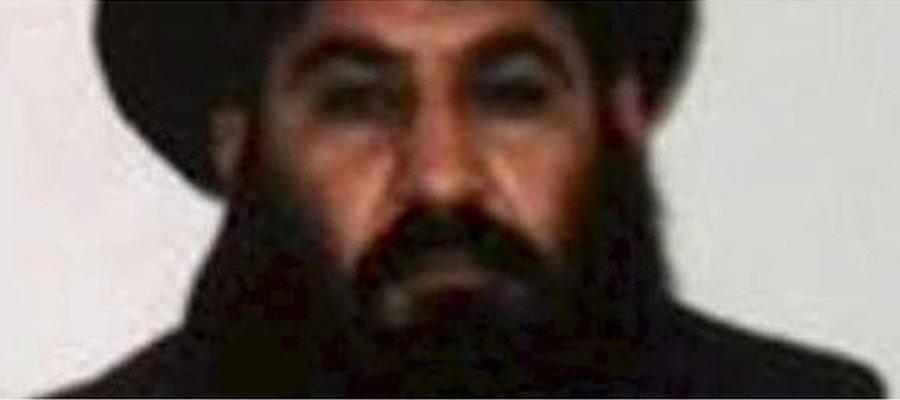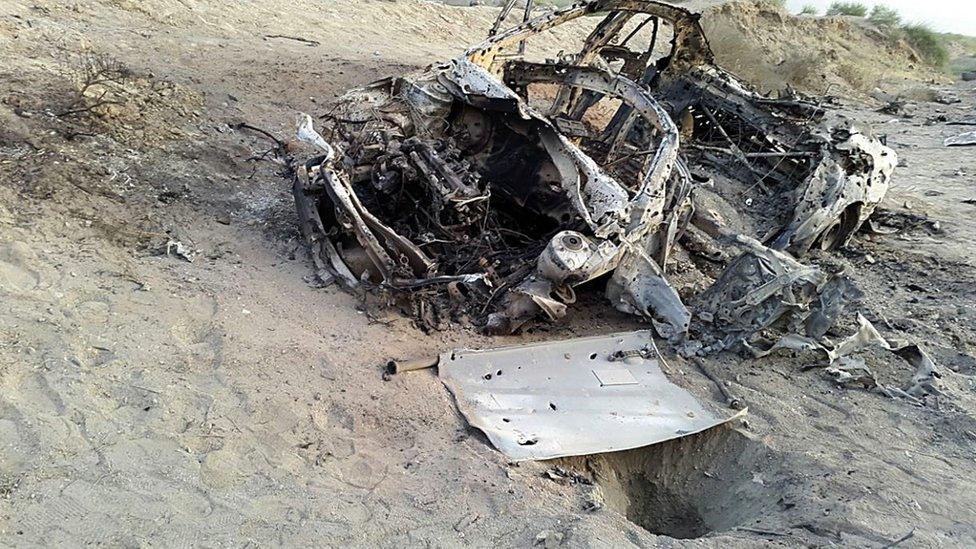Mullah Mansour death: Taliban may face fresh leadership crisis
- Published

Taliban fighters overran the Afghan city of Kunduz last year
The death of the Afghan Taliban leader, Mullah Akhtar Mansour, would be a serious blow for the insurgent group.
It would not automatically mean the end of fighting in Afghanistan, but it would open a new chapter in the history of the group, which is facing a crisis of leadership.
A number of traditional high ranking Taliban militants with potential to lead the group and keep it united have either died of natural causes or were killed over the past 15 years.
If his death is confirmed, who might take over? A faction within the Taliban would like Mullah Mohammad Yaqoob, the eldest son of Taliban founder and spiritual head Mullah Omar, to take over.
His son is believed to be about 27 years old and was appointed by Mullah Mansour in April 2016 as military commander of 15 out of Afghanistan's 34 provinces, and is a member of the group's powerful decision-making body, the Leadership Council.
Other leading figures might favour Mullah Abdul Ghani Baradar, a founding member of the Taliban and Mullah Omar's former deputy, who has been held by Pakistan since 2010.
Afghan spy agency confirm Taliban leader's death
Profile: Mullah Akhtar Mansour
The emergence of a new contender is also possible, but reaching a consensus would be a daunting task.
The role of powerful commanders, including the Taliban's top military commander, Abdul Qayum Zakir, and Sirajuddin Haqqani - one of Mullah Mansour's two deputies and head of the Haqqani militant network - is also crucial in the election of the new leader.
It is possible that Mullah Mansour's successor might adopt a more radical approach, in fighting, war tactics and peace talks with the Afghan government.
The Taliban's splinter group, which emerged in opposition to Mullah Mansour's leadership, would likely be reconciled by a new leader. Of course, it depends who that is.
It is also likely, however, that Mullah Mansour's death would lead to a further fragmentation of the Taliban.
What Mansour leaves behind

The Taliban gained extensive amounts of territory under Mullah Akhtar Mansour
As a founding member of the Taliban who ran the insurgency as Mullah Omar's deputy for at least three years, Mullah Mansour had both the experience and a certain degree of legitimacy to lead the group.
Mullah Mansour was known as a moderate figure and prone to a peaceful resolution of the Afghan conflict. But his time at the top was hit by several unexpected developments.
He challenged the legitimacy of the so-called Islamic State group (IS) and declared an all-out war against it. The Taliban's opposition to IS has been instrumental in preventing the group establish itself in Afghanistan.
It was also under Mullah Mansour's leadership that the Taliban expanded their territorial control throughout the country. They now hold more territory than in any year since 2001.
Footage showed prisoners, freed by the Taliban, running out of the prison in Kunduz
In September 2015, the Afghan Taliban even managed to briefly capture Kunduz - the first provincial capital it had seized since their regime was ousted by US-led forces in late 2001, and the most important victory in that time.
But Mullah Mansour also saw the emergence of a splinter Taliban group which resulted, for the first time in the Taliban's history, in internal fighting.
The reports of his death come at a time when he had largely managed to establish his authority and heal the rifts within the group.
The Taliban insurgency has shown its resilience over the past 15 years. But their biggest challenge now is finding a leader who could not only lead but inspire and unite the rank and file.
Previous death reports

Images showing the vehicle in which Mullah Mansour was reportedly travelling were distributed on Saturday
While the US officials said it was "likely" that Mullah Mansour was killed, the Afghan intelligence agency, the National Directorate of Security (NDS) said categorically on Sunday that he was killed.
This is not the first time that the death of Mullah Mansour has been reported. In December 2015, claims about his injury and even death in a shooting incident near the Pakistani city of Quetta turned out to be wrong.
Several Taliban sources have denied the assassination of their leader in Saturday's drone strike. But it is now up to the US and the Taliban to prove their claim and counter-claim.
The area targeted by the drone is known for Taliban activity, drug trafficking and smuggling of goods. It is close to Afghanistan's southern Kandahar and Helmand provinces and lies on the main road between Quetta and Taftan, on the Pakistan-Iran border.
Over the past 15 years, the US has carried out hundreds of drone strikes in Pakistan, mainly in the Federally Administered Tribal Areas (FATA) resulting in the killing of several high ranking militants.
But this was the first known drone attack in Balochistan province, where the Taliban's main leadership council, the Quetta Shura, has reportedly been based.